The garden
"Dianthus carthusianorum is everything I like best in a plant. It is a clear colour, delicate, unimproved and see-through.”
We are walking along the mown path in Mary Keen’s new Cotswold garden, enveloped by the radiant, high-summer haze that has become its seductive heart. Although this part of the garden has the advantage of being wider than the neighbours’ gardens, it is hard to believe that you can feel so delightfully lost in the middle of a pretty country town.
The borders shimmer with lacy, white Erigeron annuus and the feathery grass Deschampsia cespitosa ‘Goldtau’, the haze punctuated by tiny dashes of the electric-pink dianthus or the clear sky-blue of wild chicory. There are stands of carmine hollyhocks, radiant single dahlias and soft mounds of smoky-purple asters.
In brief
What Private garden of garden designer, gardener and writer Mary Keen. Where South Gloucestershire. Soil Stony Cotswold brash. Size 850 square metres, including a 6m x 6m courtyard. Climate Temperate, cold and windy in winter. Hardiness zone USDA 9.
Planting
To create the feeling of a garden without borders, Mary removed the inherited stretches of heavy Leyland cypress (x Cuprocyparis leylandii) hedging and set about planting a covetable cast of trees and shrubs to draw the eye away from the boundaries. There is a fleet of gently self-seeding Euphorbia characias subsp. wulfenii (“I would never be without it, such a good structural plant”), the crab apple Malus hupehensis, chosen for its cloud of white blossom and long-lasting red fruits, and the weeping evergreen Azara microphylla, with its tiny, vanilla-scented flowers in spring to clothe one of the newly revealed walls.
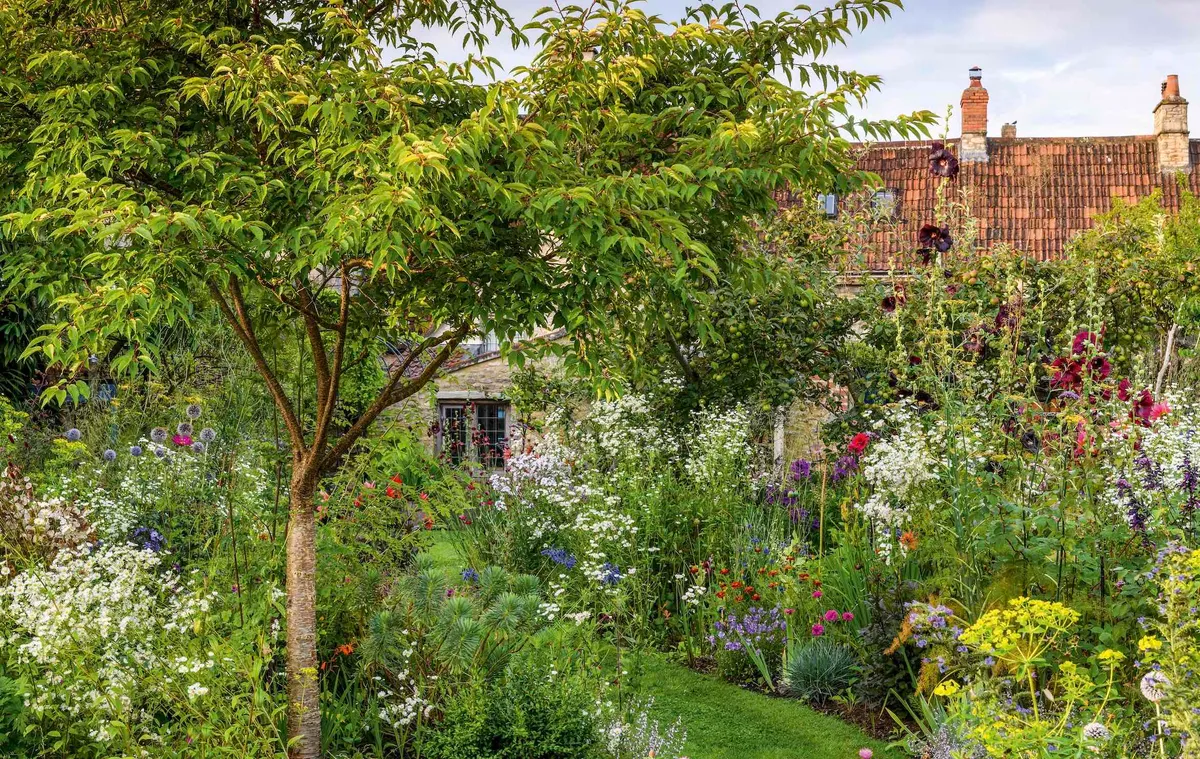
There are 20 different roses too, each of which has been quietly absorbed into the garden to add texture, colour or scent. There is Rosa ‘Scharlachglut’ emerging from long grass, with its “big, big crimson flowers – almost vulgar” – and both Rosa x odorata ‘Mutabilis’ and Rosa x odorata ‘Bengal Crimson’ in the sheltered courtyard next to the house where they flower from spring until Christmas. The mown path continues through a stretch of wildflower meadow to a small orchard. “I couldn’t make a garden without an apple tree,” says Mary. “We had room for just three trees so I chose apples we like to eat. ‘Ashmead’s Kernel’ is a really delicious Gloucestershire cultivar and we have ‘Discovery’ and ‘Egremont Russet’.
The meadow
There are three pear trees too including ‘Concorde’, which is the pear you must grow if you have room for only one.” The meadow began by “just letting the grass grow long”. Mary was delighted to find an established colony of the orange-flowered Pilosella aurantiaca and has been avidly adding layers with plug plants and bulbs. The meadow is particularly exciting in May and June when hundreds of Narcissus poeticus give way to the clear-pink form of Gladiolus communis subsp. byzantinus, and the elegant, sky-blue Camassia cusickii. As you make your way around the garden, there are inviting places to sit – always in the shade of a tree or under a bower of roses – or you might want to investigate the stone Wendy House, a perfect, miniature house built in the 1970s, a dream for a young child but perfect for stowing away agapanthus in the winter too.
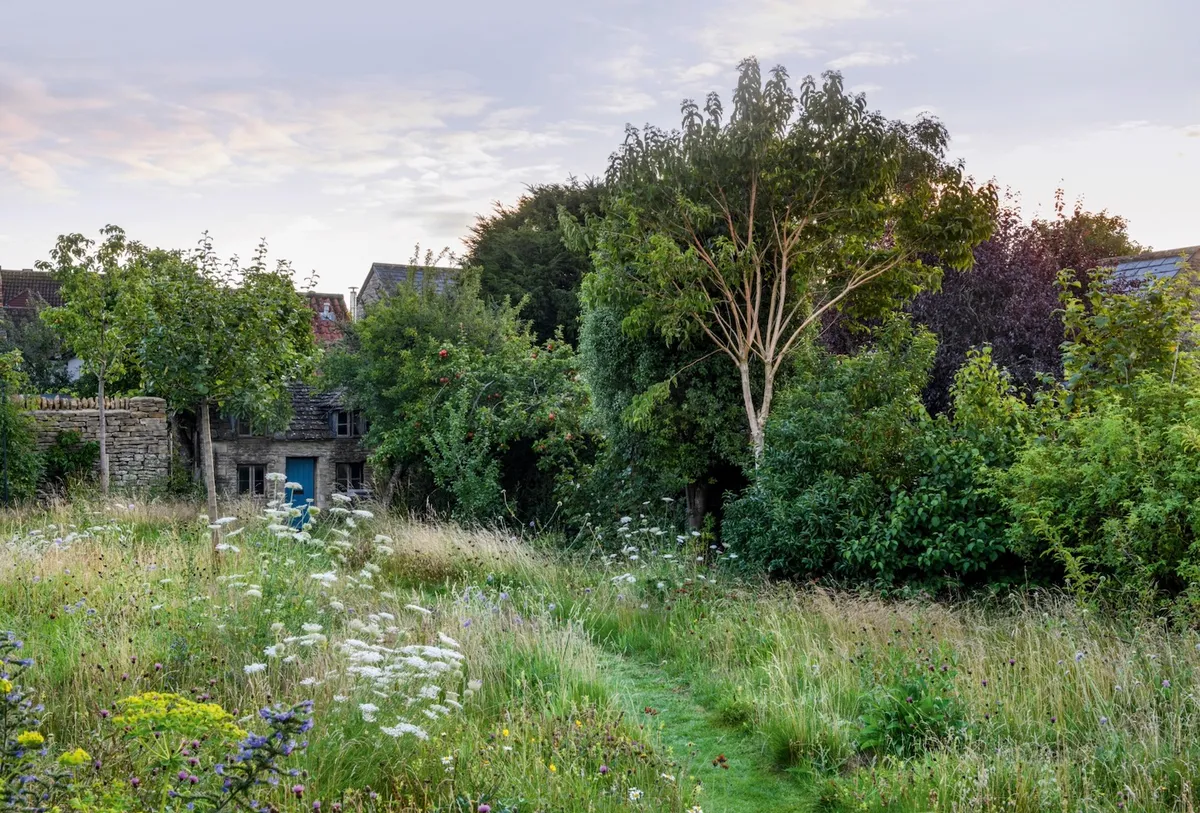
The greenhouse and courtyard
The path loops around compost bins discreetly hidden behind some plump box (Buxus sempervirens ‘Rotundifolia’) and travels, rather brilliantly, right through the traditional wooden Woodpecker Joinery greenhouse (pictured as our heading). “I think in a small garden walking through the greenhouse is key – otherwise it’s a dead end.” On to the working area, the existing breeze-block potting shed now attractively reboarded and retiled. Collections of pea sticks stand in open-mouthed jars and industrial shelves are neatly stacked with terracotta pots. Working with sympathetic builders Danny and Alan White – who dug the greenhouse foundations by hand and converted the old woodstore into an auricula theatre with a glass roof, decorative lead flashing and neat, scalloped edging – made the development of the garden a pleasure. Back through the rose arches to the small, walled courtyard, which fills the view from the kitchen window.
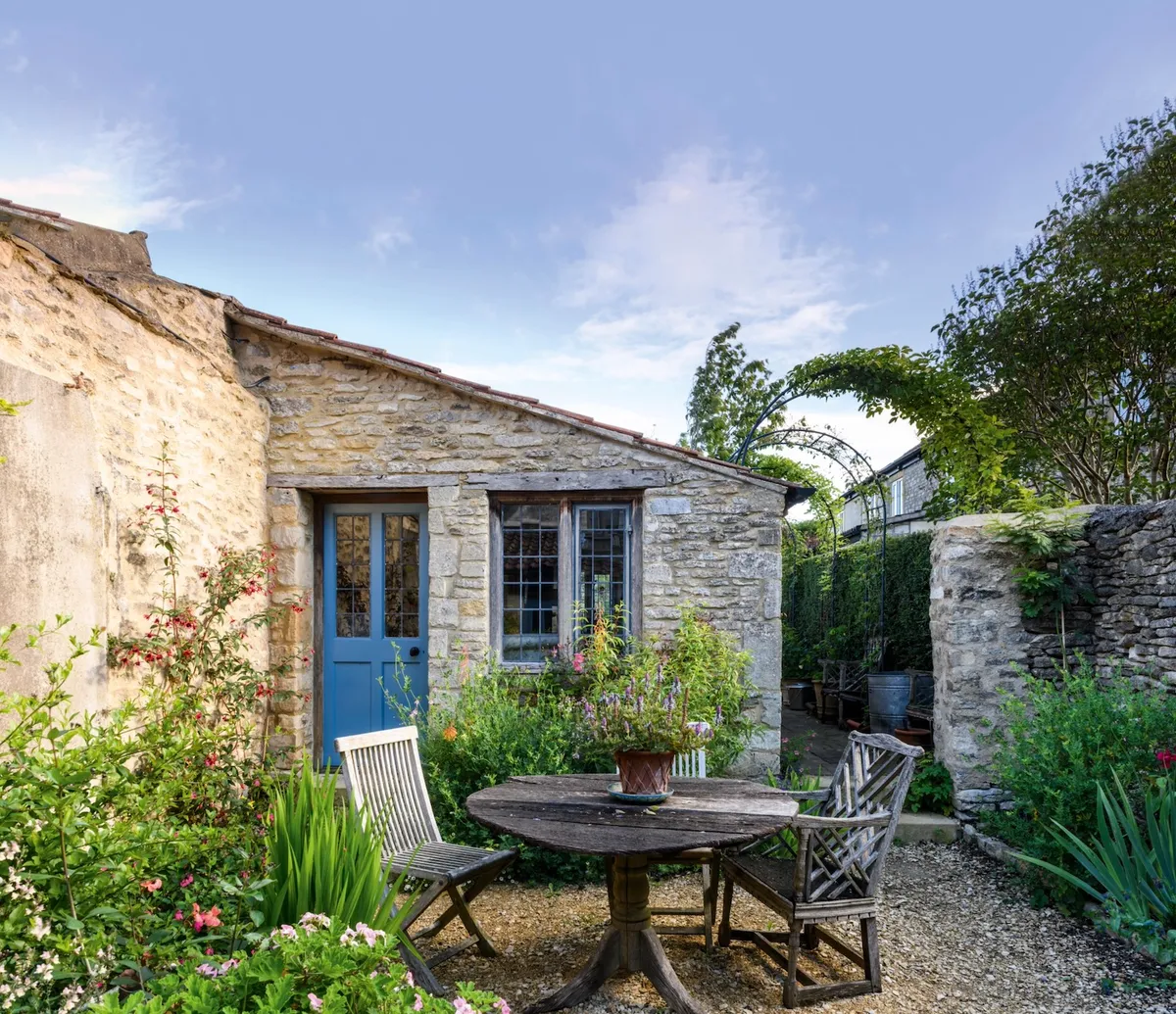
This sheltered space has been transformed from a plain and orderly terrace to a luminous, painterly garden, spilling over with colour and scent throughout the year. The York stone paving has been replaced with sandy Cotswold hoggin, “which makes it feel bigger and lighter”, and filled with a succession of delights: scented wands of lemon verbena (Aloysia citrodora), rich, dangling heads of Fuchsia ‘Lady Boothby’, the elegant, salmon glow of Kniphofia thomsonii.
Mary wanted to create an inviting and atmospheric garden – with a sense of surprise – and she has succeeded entirely. Her approach is both practical and deeply intuitive and her individual plant choices are the gloriously colourful result
of a life spent observing, tending and growing.

24 key plants
Saliva Amistad
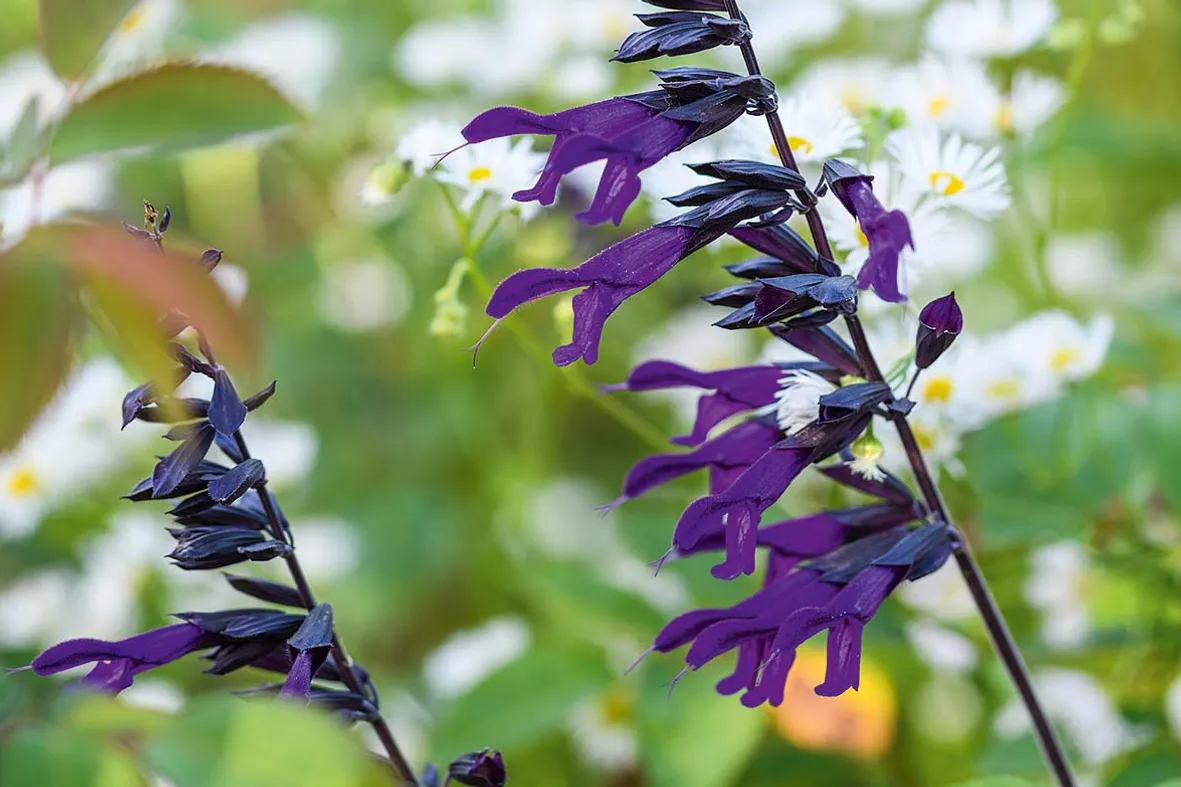
A towering plant with rich, velvety-purple flowers that offer a dark accent from May until November. 1.5m. AGM. Holds an Award of Garden Merit from the Royal Horticultural Society. RHS H3†.
Dahlia ‘Waltzing Mathilda’

One of Mary’s favourite dahlias, this single-flowered cultivar is great for pollinators. Its blooms are a warm coral colour that are
held above black-crimson foliage. 75cm. AGM. RHS H3. Here's how best to grow dahlias.
Daucus carota
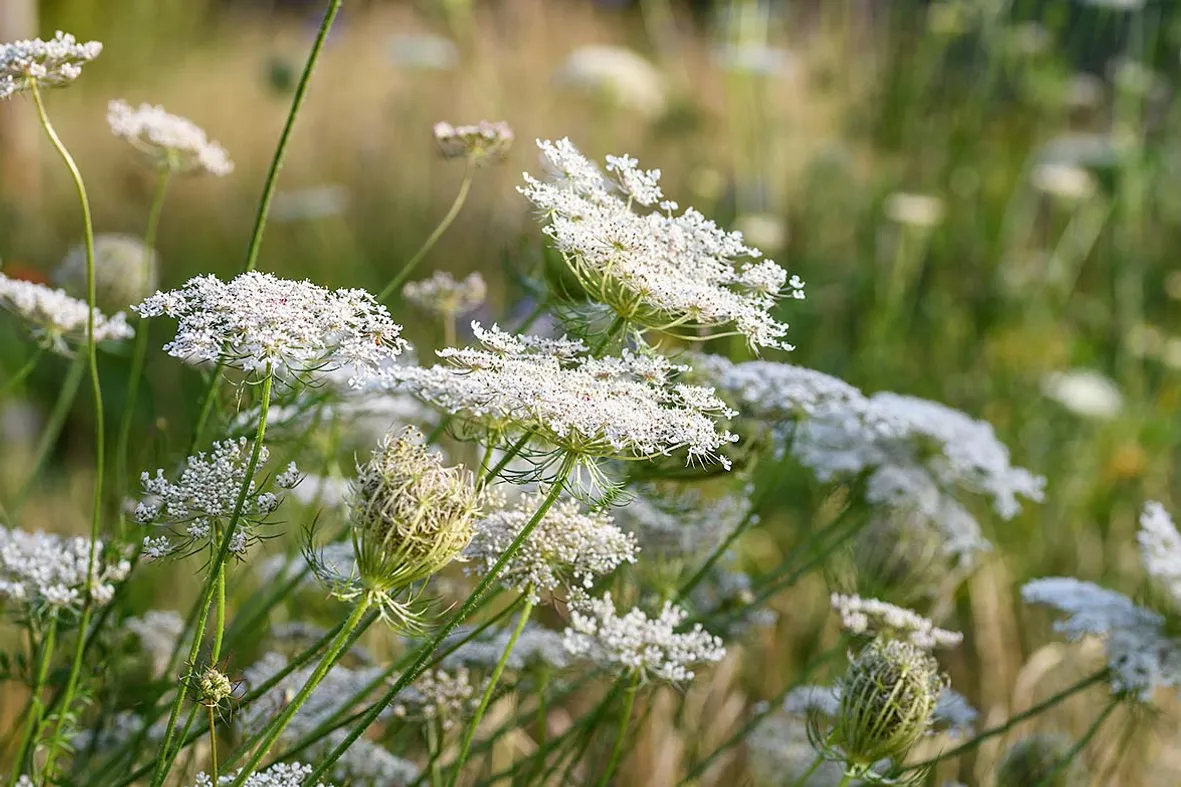
The attractive wild carrot, which Mary grows from seed, forms gentle, lacy, white platforms amid the soft grasses in summer – a calming contrast to the richly coloured beds. 75cm. RHS H7.
Dahlia ‘Karma Fuchsiana’

A beautiful dahlia with prolific, bright-pink flowers surrounding a fluorescent, lime-yellow heart. 80cm. RHS H3. Don't miss our piece on favourite dahlias to grow in the garden.
Echinops ritro ‘Veitch’s Blue’
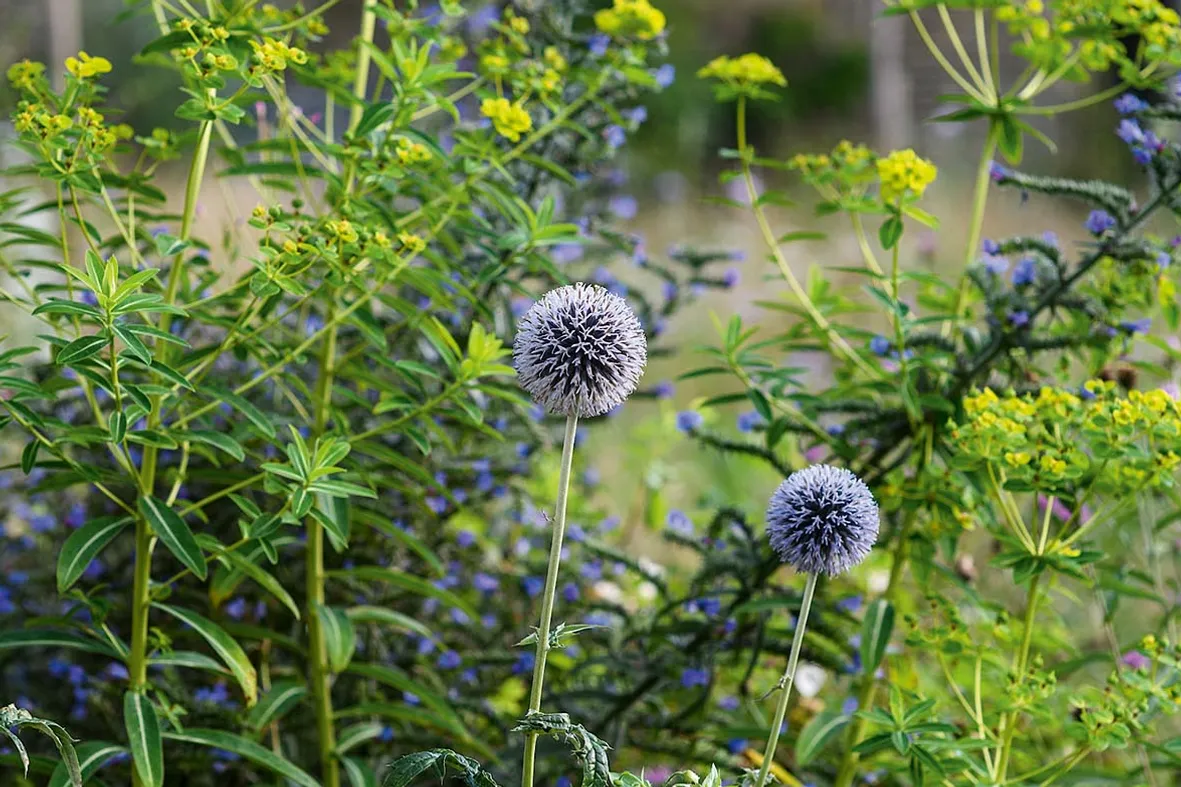
This perennial globe thistle, much loved by bees, has silver, branching stems bearing spherical heads of indigo-blue, adding a neat, bobbing contrast to the airiness of plants such as Erigeron annuus. Good for cutting and flowers more than once in a season. 1m. RHS H7, USDA 3a-8b.
Knautia arvensis
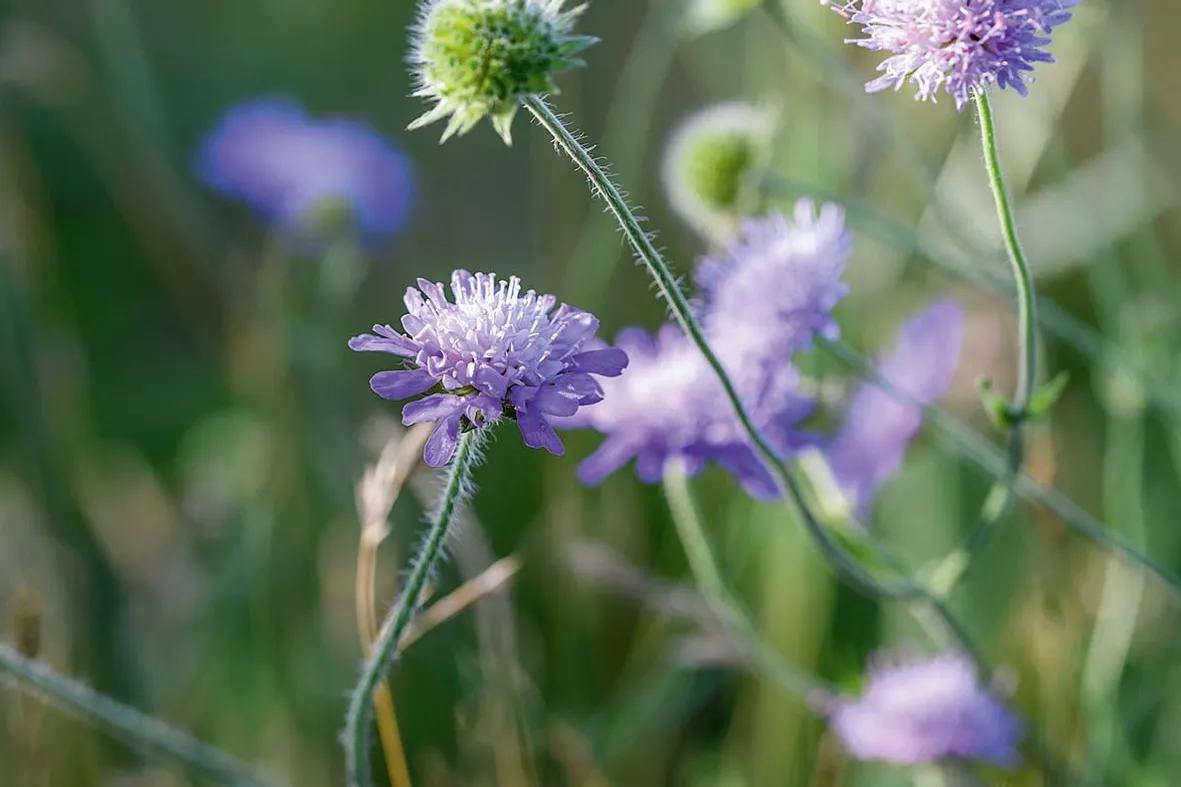
Field scabious is a native perennial with pale-mauve, pincushion-like flowerheads on slender stems over a long period from midsummer. Mary has planted plugs of it in the wildflower meadow, which has proved very effective. 1.5m. RHS H7.
Erigeron annuus

The tall fleabane is a short-lived perennial with delicate, small, white daisies from August to December, which works brilliantly between robust perennials. Mary thins out seedlings where they are not wanted. 1m. RHS H6.
Dahlia ‘Winston Churchill’

Mary loves this dahlia for its rich, shocking-pink colour late in the season – and also because it came from the Rothschild family garden at Eythrope in Buckinghamshire, which was the subject of Mary’s book Paradise and Plenty. 90cm-1.2m. RHS H3.
Tagetes patula ‘Cinnabar’
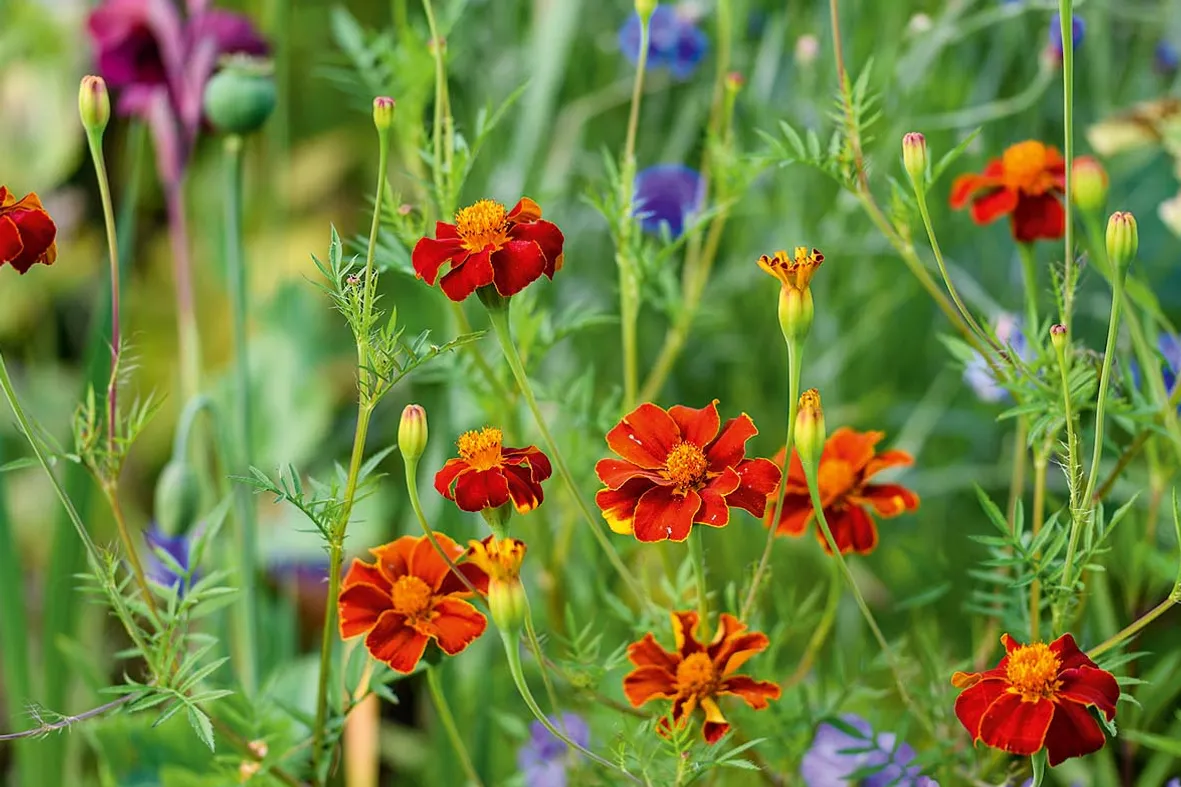
This marigold, a wonderfully tall form from Great Dixter, is a half-hardy annual with fiery-red, single flowers finely outlined in gold. The plants are well branched, and flower from summer to the first frosts. 90cm.
Alcea rosea

Single hollyhock in a rich-plum colour – a gift from landscape architect Pip Morrison. Mary tackles rust by pulling off affected leaves. 2m. RHS H5, USDA 2a-10b. Here's everything you need to know about hollyhocks.
Agapanthus

One of a collection of Headbourne hybrids – hardy, deciduous agapanthus – that have been chosen by Mary for the clarity of their blues. 50cm-1m. RHS H4. Don't miss our plant profile on agapanthus.
Salvia patens ‘Guanajuato’

A large and beautiful salvia that came from Derry Watkins at Special Plants Nursery, which is based near to Mary’s new home. Sumptuous, rich-blue flowers on tall stems. Needs sun and good drainage. This salvia should come through the winter – well mulched as with a dahlia – but Mary keeps a plant for spring cuttings too. 1m. RHS H3. Read our piece on the best salvias.
Phlox paniculata ‘Nirvana’
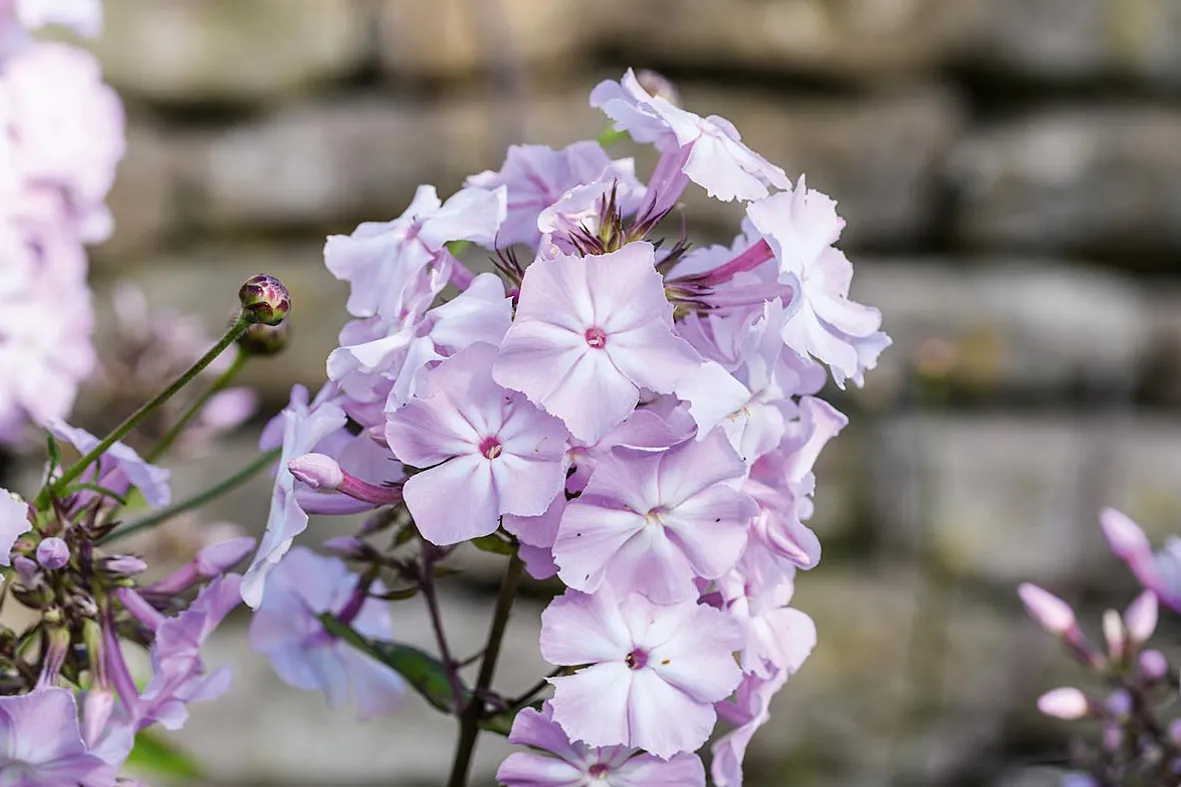
A delicately coloured and long-flowering border phlox with small, white flowers set off by purple eyes and buds. 90cm. RHS H7.
Kniphofia thomsonii. A particularly graceful, rare kniphofia that Mary grows in her sheltered courtyard garden. Flowering in late summer, the well-spaced, individual blooms curve delicately downwards, and are a luminous orange flushed with yellow. 1m. RHS H3.
Althaea cannabina
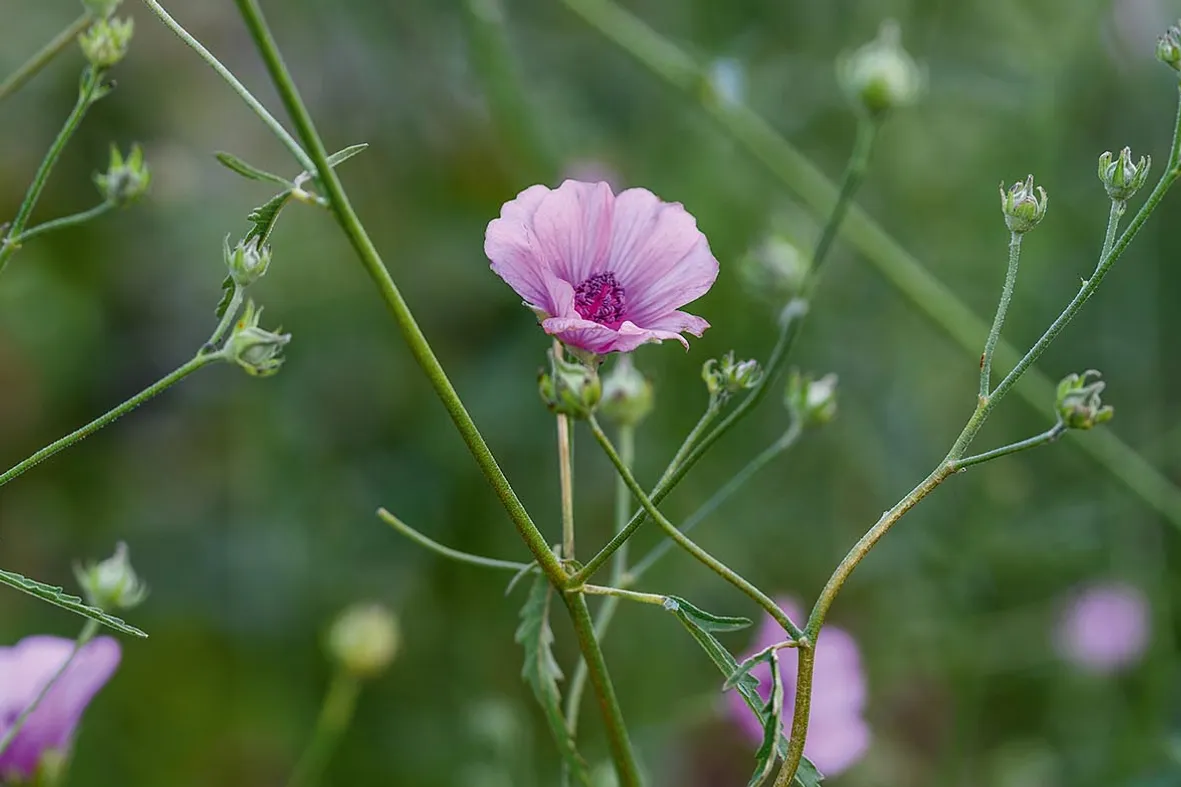
Hardy, upright perennial with small, hollyhock-like, lavender-pink flowers with a dark eye on tall, willowy stems from July to October – the very definition of airiness. 1.5-2.5m. RHS H7.
Euphorbia ceratocarpa
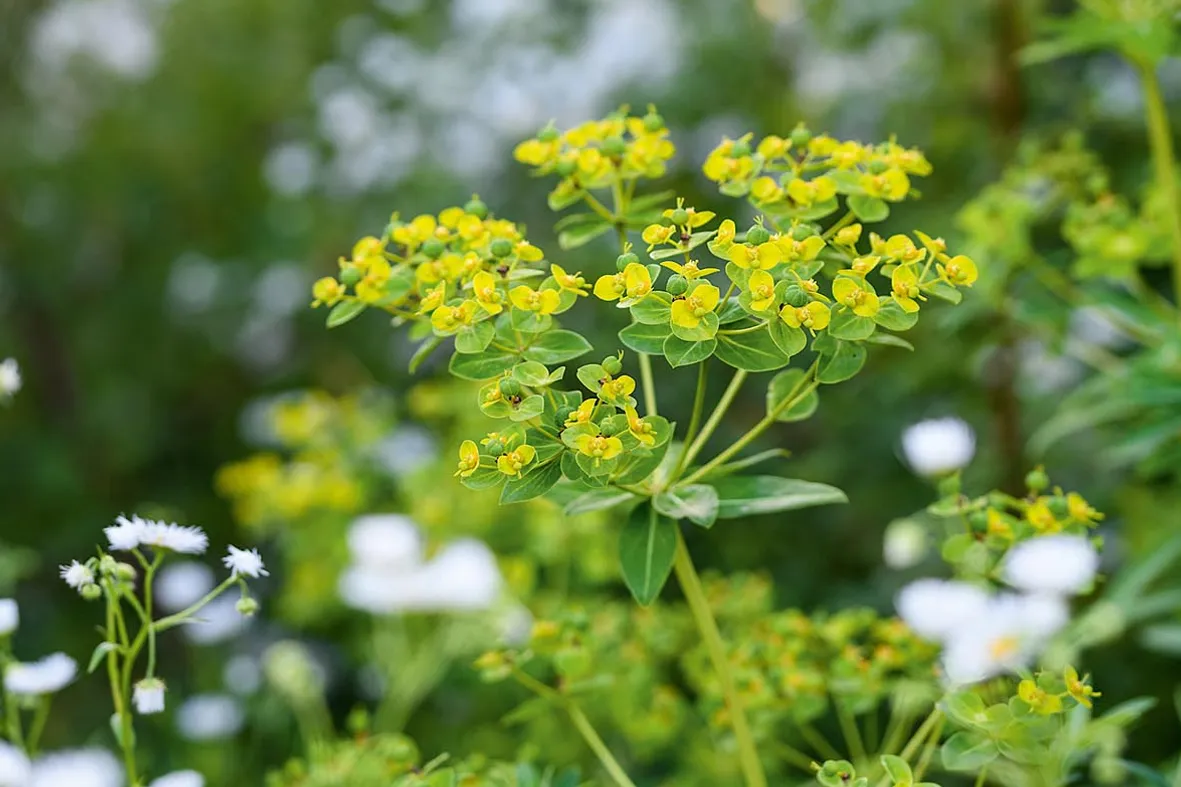
One of many euphorbias in Mary’s garden. An evergreen sub-shrub grown for its yellow-green flowers, which lift the darker colours of neighbouring plants over a sensationally long period. 1.7-2m. AGM. RHS H4.
Pelargonium ‘Venus’
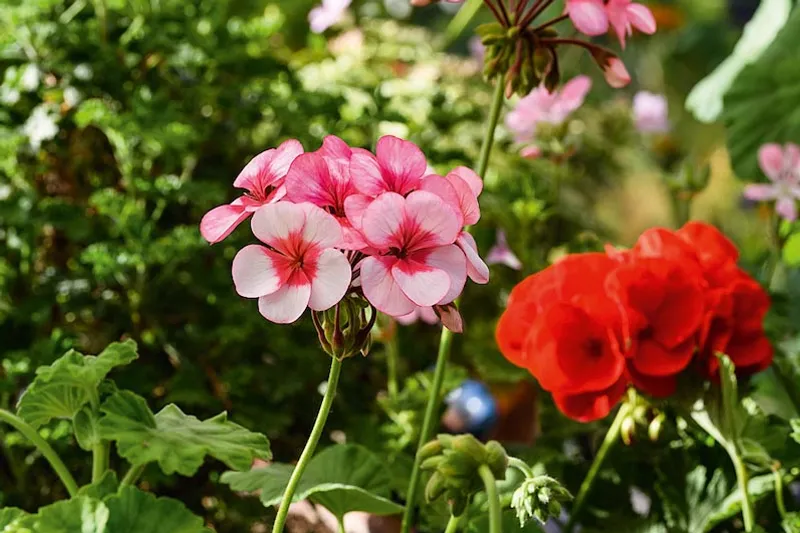
A salmon-pink pelargonium with a dark centre. “I like anything with a dark eye,” says Mary. “‘Venus’ was also a favourite of the Duchess of Devonshire. It needs renewing often from cuttings or it sulks.” 40cm. RHS H1C.
Eryngium x zabelii. ‘Big Blue’
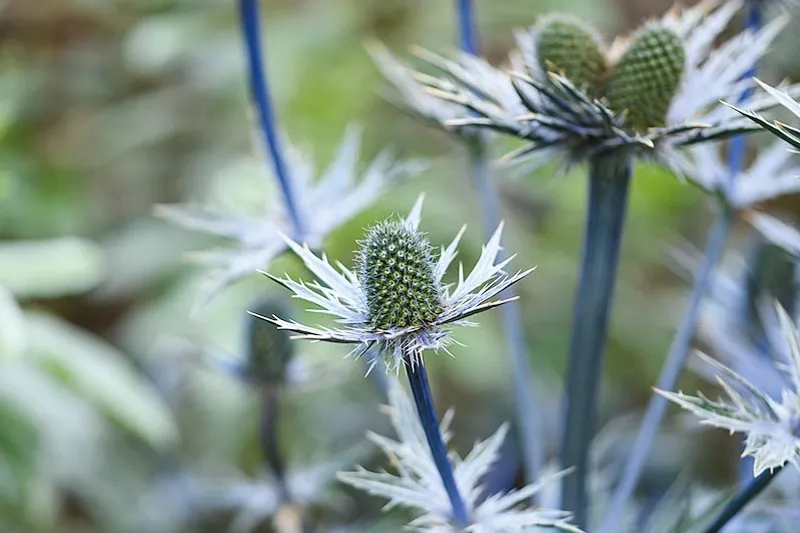
An upright perennial with spiky, silvery-green foliage and stiff, branched stems. The blue, thimble-shaped flowerheads are surrounded by a ruff of prickly, silvery-blue bracts. 70cm. AGM. RHS H5, USDA 5a-9b. Read our plant profile on eryngium.
Crocosmia ‘Hellfire’
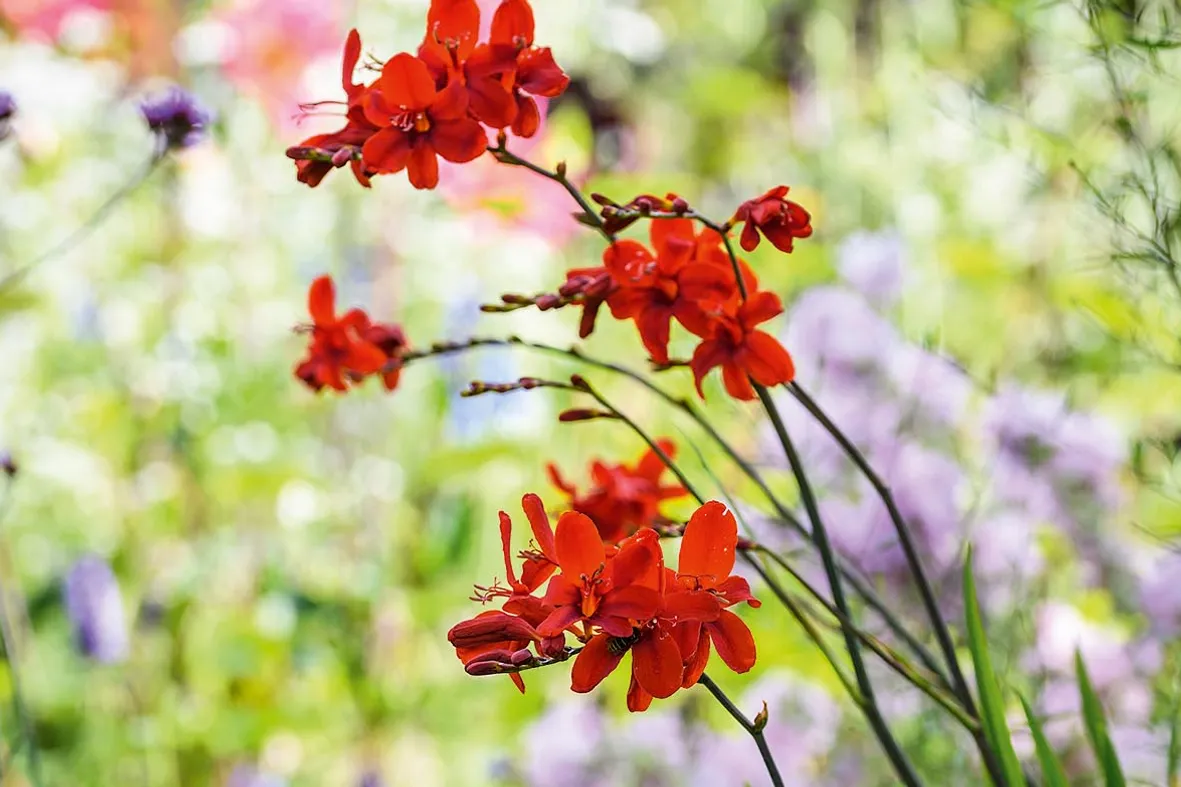
A large-flowered cultivar bearing clusters of rich, deep-red flowers on arching stems from summer to autumn. Wonderful for adding intense colour to the shade – “but it needs water”. 1-1.5m. AGM. RHS H5.
Fuchsia ‘Lady Boothby’
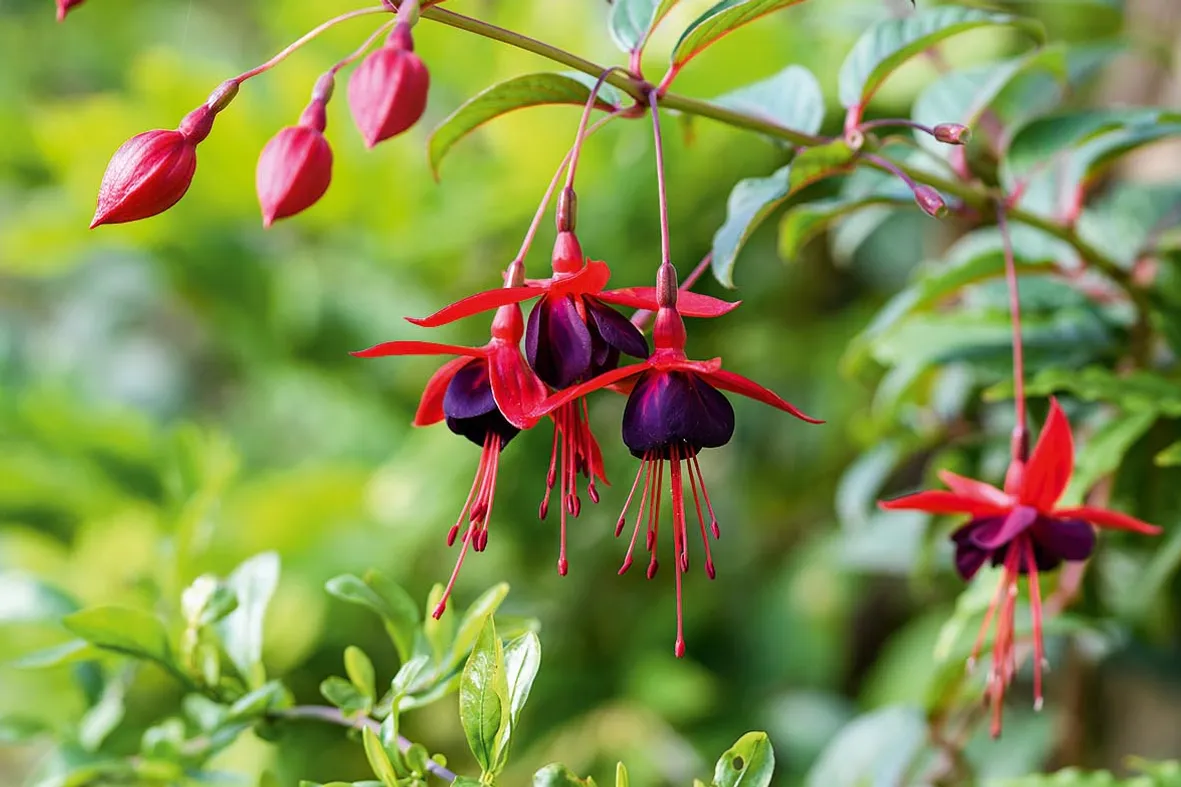
Rich-crimson and dark-purple flowers from June until October. “I love fuchsias,” says Mary. “They conjure up the West Country for me and flower for such a long time.” Mary trains hers against the courtyard garden wall. 2.5-4m. AGM. RHS H4. Discover everything you need to know about fuchsia.
Salvia ‘Nachtvlinder’
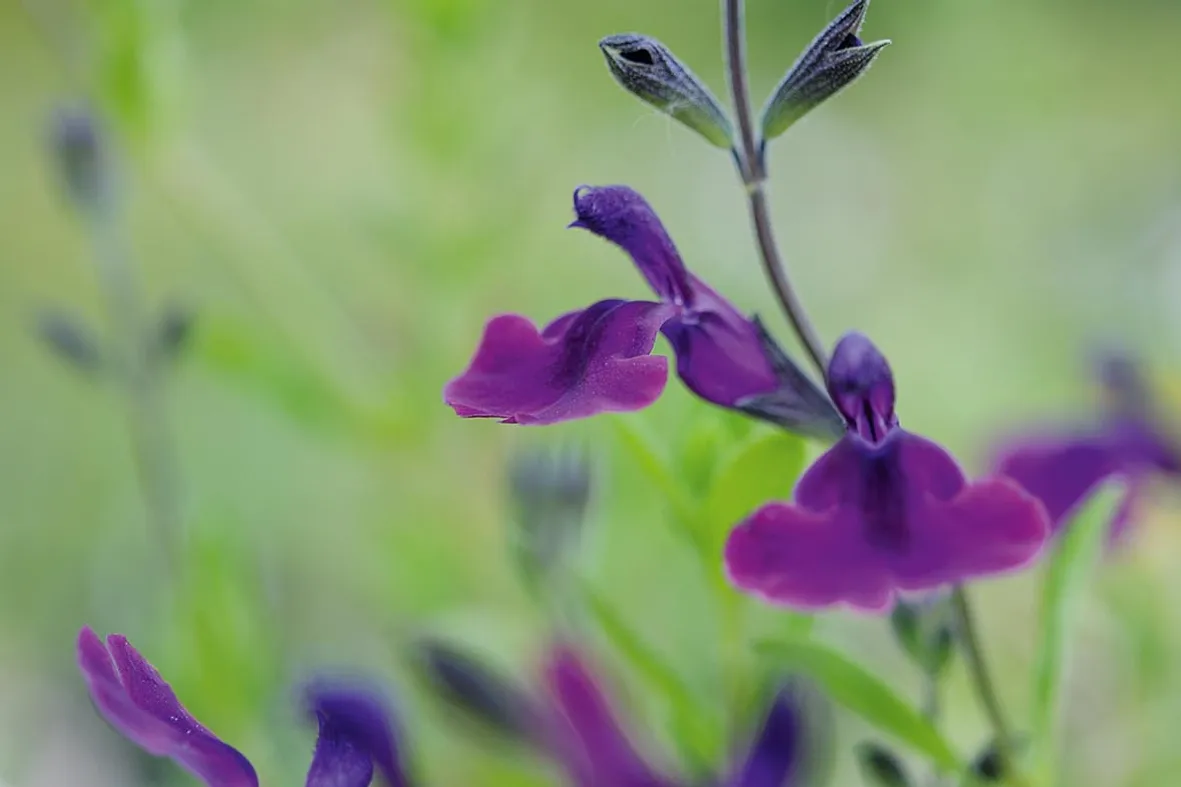
A bushy plant with aromatic, neat, mid-green leaves and small, velvety, dark-purple flowers that last from June to November. An excellent companion for roses. 75cm. AGM. RHS H5.
Sanguisorba officinalis 'Red Thunder'
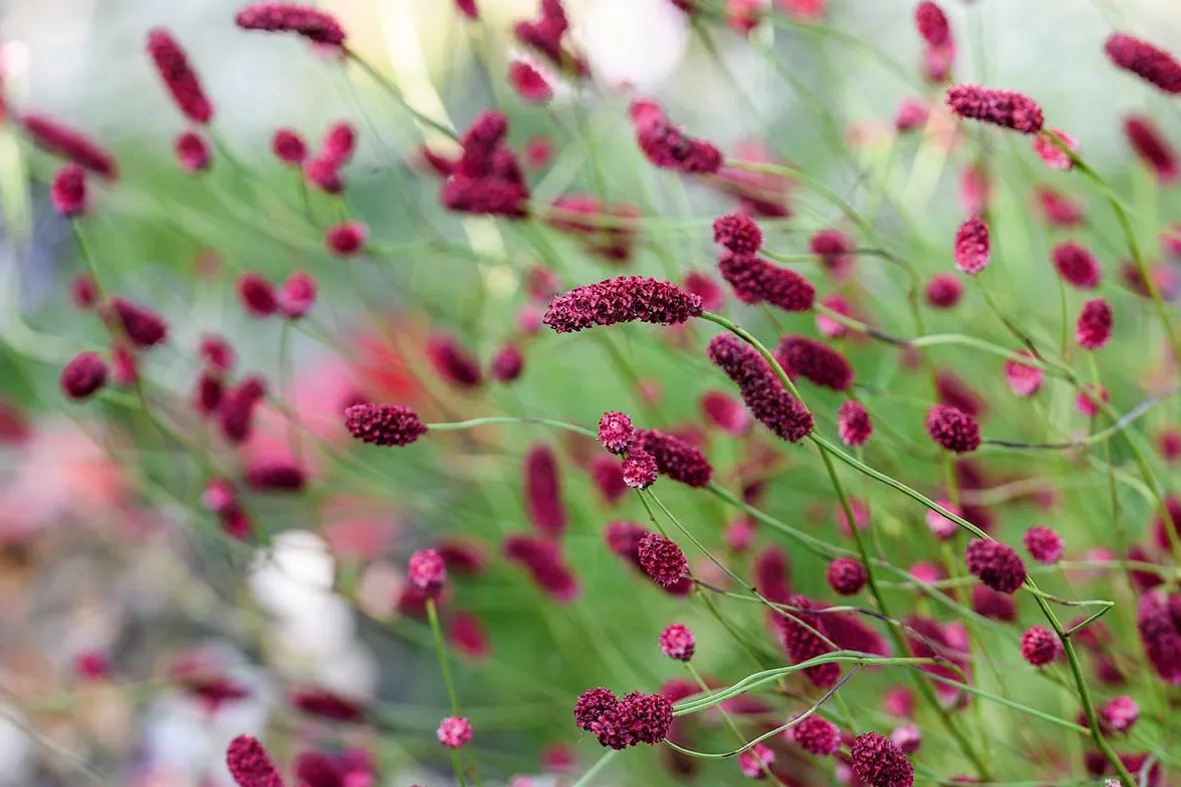
One of Mary’s favourite plants, which she loves for its airy quality. Neat, dark-red flowers seem to float on slender, upright stems from June to September. 1.2m. RHS H7. Here's how to grow sanguisorba.
Cicerbita bourgaei
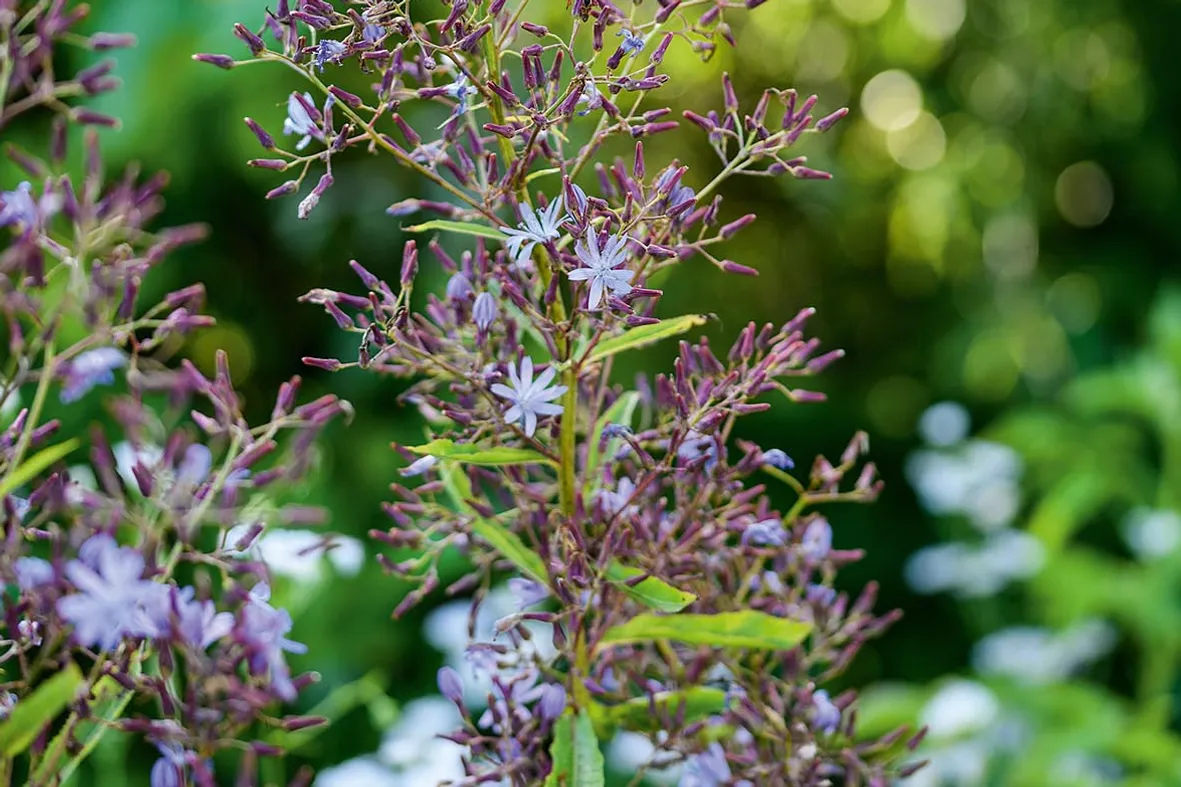
This chicory relative from northern Turkey and the Caucasus has bright, blue-petalled flowers all summer on multiple stems. Mary grows it in the wildflower meadow: “It’s so, so hard to find such a clear blue.” 50cm-1.5m. RHS H5, USDA 3a-8b.
Allium lusitanicum

A pretty perennial bulb, useful for its long flowering period from mid- to late summer, and retaining its good, dark-pink colour rather than turning brown. 50-75cm. RHS H6, USDA 5a-9b. Don't miss our plant profile on alliums.
